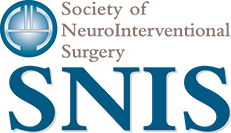Stroke victims deserve the same urgency and level of care as trauma patients, say stroke surgeons, patients and other advocates with the Get Ahead of Stroke campaign who are recommending life-saving changes to stroke protocols as part of the 25th anniversary of Brain Awareness Week from March 16 to 22. Stroke is the leading cause of brain-related deaths in the U.S.
Every 40 seconds, someone has a stroke and every 4 minutes someone dies of stroke in the U.S. According to the Centers for Disease Control and Prevention, about 140,000 people in the United States die every year from stroke. Stroke surgeons say emergent large vessel occlusions (ELVO) — the most serious strokes — require direct transport to a Level 1 stroke center to ensure that patients have the best chance to survive and reduce disability. Unlike trauma protocols, most states do not require transport to the most capable treatment facility.
“As we focus on brain health this week, a critical component is ensuring people have access to top level treatment in the event of a stroke, because appropriate care can be the difference between life and death,” said SNIS President Richard P. Klucznik, MD. “Our mission is to ensure that every stroke patient gets the care needed to arrive to an appropriate facility, survive treatment and thrive post-care.”
The Get Ahead of Stroke campaign is focused on ensuring three components of stroke treatment: Arrive. Survive. Thrive.
- ARRIVE to the appropriate facility as soon as possible. Less than 15% of severe stroke patients get the care they need, mainly because they are taken to the closest hospital rather than the most appropriate. The solution is to have EMS assess stroke severity in the field and transport patients to the most appropriate facility. Sixty-five percent of severe stroke patients taken to a Level 1 stroke center live without long-term disability versus 42% of those who are taken to the nearest facility.
- SURVIVE with the help of appropriate, swift treatment. Nearly 2 million brain cells die every minute a stroke goes untreated. For the best possible outcome, an ELVO stroke patient needs to receive neuroendovascular stroke surgery, or thrombectomy, within 24 hours.
- THRIVE in recovery. The type of treatment received changes the course of recovery dramatically, including shorter hospital stays and less disability. Patients who receive thrombectomy increase life expectancy by five years compared to patients who do not receive this specialized treatment. A severe stroke patient who does not receive appropriate care may spend more than $140,000 on care over his or her lifetime.
During Brain Awareness Week, help your audience better understand the life-saving importance of appropriate stroke triage, transport and treatment. To coordinate interviews with leading stroke surgeons, patients and advocates, please contact Maria Enie at menie@vancomm.com.
Get Ahead of Stroke is a national public education and advocacy campaign designed to improve systems of care for stroke patients. Founded in 2016 by the Society of NeuroInterventional Surgery (SNIS), today the campaign is supported by a coalition of organizations with the goal of securing the best possible outcomes for stroke patients by driving policy change and public awareness nationwide.
Brain Awareness Week is a global campaign, coordinated by the Dana Foundation, to foster public enthusiasm and support for brain science.

